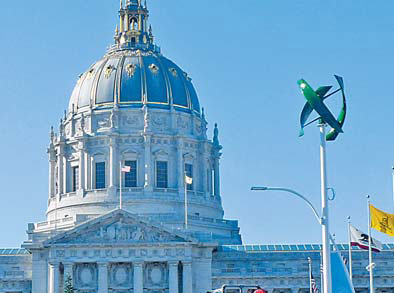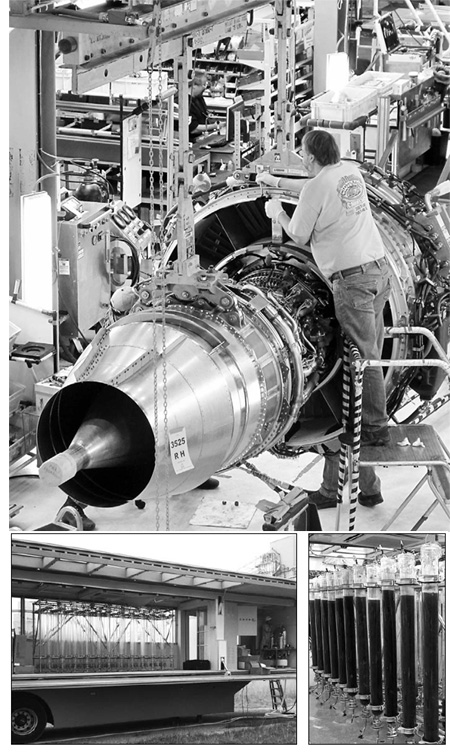Focus
Keeping in step to cut carbon footprint
By Li Xing (China Daily)
Updated: 2011-01-18 07:51
 |
Large Medium Small |
|
|

Corporations and NGOs in China and the US team up to carve clean-energy route in climate of cooperation. Li Xing traveled to six US cities to find out more.
As the rest of the United States celebrated Labor Day last September, Doug Durst was working with four Chinese researchers as they monitored 48 tubes filled with algae in a mobile laboratory in Kentucky.
As a strategic planning manager for Duke Energy Corp, he was working with experts from China's ENN Group on a three-month mission to find the best strain for soaking up carbon emissions at coal-fired power plants.
"Wang Huiling treated the algae as if it were her babies," Durst said of the only female scientist in the group.
The project not only highlights one of several partnerships between Duke Energy, the largest utility company in the US, ENN and China's Huaneng Group, but also represents the many examples in which Chinese and US businesses, government agencies and NGOs are teaming up to explore clean-energy technologies and policies.
Whether they are small, family-run, or multinational giants, joint efforts are blazing new trails in sustainable
development and green industries.
China and the US together account for more than 40 percent of the world's greenhouse gas emissions, and that means both nations have "a lot of responsibility", said David G. Hawkins, director of climate programs for the Natural Resources Defense Council, a US environmental action group with 1.3 million members and online activists.
"It also means there is a tremendous opportunity if we cooperate and make this a strategic objective of our relationship. We have a lot of power to improve the situation," said Hawkins, whose group benefits from the expertise of more than 350 lawyers, scientists and other professionals.
The Duke-ENN algae experiment is one of several projects exploring new technologies.
Although algae are short-lived, scientists discovered they grow very fast, especially when feeding on carbon dioxide (CO2). As a result, researchers worldwide are experimenting with algae to reduce CO2 emissions at coal-fired power plants.
Back in China, ENN's scientists had begun testing for algae strains with the best carbon-absorbent capability at a new research base in Langfang, Hebei province. They used pure CO2, which adds to the cost of algae cultivation, said Durst at Duke.
The tests in Kentucky went a step further, using flue gas from East Bend Station, a coal-fired power plant in Kentucky, as the CO2 nutrient source. After being fed the gas, the algae turned from light to dark green. It was then tested for carbon content.
The team of scientists, who worked almost seven days a week for the entire three months, found several strains that grew just as well using flue gas rather than pure CO2.
Duke "benefited from the three years of intensive research ENN conducted at its eco-city facility (in Langfang)", said Durst. "In that integrated and controlled environment, the Chinese biochemists tested hundreds of strains of algae and identified the ones they believed work best with flue gas."
Taking action
Randy Tinseth, vice-president of marketing for Boeing Commercial Airplanes, said one of the greatest challenges for the global aviation industry is that it generates 2 to 3 percent of the world's CO2. There must be a road map for "neutral growth" of carbon emissions within the industry by 2050, he said.
Step one is to increase the number of fuel-efficient airplanes; step two is to improve air traffic management and find direct routes, and step three is to find new renewable sources, such as bio-fuels.
"China is one of the places where we're working on projects with local governments and industries to find sustainable sources of bio-fuels," said Tinseth.
Boeing announced last September it had opened a laboratory in partnership with the Qingdao Institute of Bio-energy and Bio-process Technology to speed up research on microalgae-based aviation bio-fuels.
Action groups like the Natural Resources Defense Council have also teamed up with Chinese companies and authorities to push for more effective changes in business practices and policies.
Ten years ago, Barbara Finamore, founder and director of the council's China program, helped seal an agreement between Jiangsu province and its sister state of California, the most progressive state in the US, to share best practice in energy efficiency.
"It wasn't easy at first, because Jiangsu's main interest was originally electrification, bringing electricity to everybody in the province," she said.
When the nation was plagued by huge energy shortages in 2002, Jiangsu officials began looking into some innovative mechanisms. Demand-side management was adopted to encourage utilities companies to use the money they collected to help customers save energy and improve energy efficiency, instead of building new coal-fired power plants.
Saving a kilowatt of electricity costs just a quarter of the amount used to generate a new kilowatt, explained Finamore.
The Natural Resources Defense Council now works with six other provinces and major cities in carrying out demand-side management.
Last November, six central government departments led by the National Reform and Development Commission, China's economic planner, and the Ministry of Finance issued a draft regulation stipulating that all utilities companies should use a share of their incomes to help industries and customers save energy.
"This is very exciting for me because even though California pioneered this effort in the US and about 20 other states followed suit, the US still does not have this program nationwide," said Finamore. "China has leapfrogged ahead in national regulations. To me, that's a real success story."
Her action group has also teamed up with a Chinese NGO headed by Ma Jun, director of the Institute of Public and Environment Affairs, to evaluate what 113 Chinese cities have done to open up information about pollution in areas under their jurisdiction.
The latest report released in late December said about 65 cities scored higher than previous studies in terms of openness with pollution information, even though some 15 cities backtracked. However, both the Chinese and US NGOs recognized that several cities have established new practices, even working with civil societies in some cases to provide information about the sources of polluting or toxic chemicals and the actions taken to control them.
Winds of change
Clean energy also provides business opportunities, as Nick Blitterswyk and his family have found. While working on New York's Wall Street three years ago, he suggested his Chinese wife, Wendy Liu, and her parents start a wind turbine business. They co-founded Urban Green Energy shortly after.
Liu's parents, who hail from Central China's Hunan province, now live in Beijing and were involved in real estate and mining before they turned to manufacturing small wind turbines at a factory in Chengde, Hebei province.
Urban Green Energy sold almost all of its wind turbines in 2010, half to residential customers and the rest to commercial installations or government-funded projects, such as in San Francisco and Pusan in South Korea, said Blitterswyk, the company's chief executive.
His New York office sells turbines to 45 countries, including the US, the biggest market, Canada, Mexico and several Caribbean nations.
He credited much of the company's success to its Beijing-based chief engineer, Song Hanjun. "He's a really talented designer of clean-energy products," said the CEO, who added that Song holds several patents, including three co-held by the company. International patents are also pending.
The technologies have enabled Urban Green Energy to develop small but quiet wind turbines with less vibration than conventional products so they can be installed on top of residential homes.
"All our customers want to look green," he said. "Our turbines look really beautiful. It's a visible statement."
Challenges ahead
Although most of those interviewed by China Daily said they are optimistic about their cooperative projects, they also see technological, social and political challenges ahead.
The algae experiment, for example, has the potential to open doors to reducing a small portion of carbon emissions, yet Durst at Duke Energy said its introduction may be limited due to the area needed to incubate and grow the amounts of algae to capture CO2 released from power plants.
Hawkins at the National Resources Defense Council also said he feels the thought pattern in Chinese and US societies is that "requiring industries to be cleaner comes at a cost to the economy".
"Policymakers believe that, so instead of looking at policies as opportunities, they are looked at as bad-tasting medicine," he said. "We know we need to do it, but it tastes bad. So we put it off as long as possible."
However, his colleague Finamore argued that as China is so vast, the development, awareness and commitment of its diverse provinces are at different levels. "To get everyone on board is a huge effort. It takes time, resources and capacity-building," she added.
Another challenge could be the economy and jobs, said Hawkins, with US politicians often accusing China of taking US jobs.
In December, Washington filed a case with the World Trade Organization that claimed a Chinese government fund that awards grants to makers of wind power equipment had violated trade rules by favoring made-in-China materials.
Some in the US Congress also talked about introducing punitive import taxes on China-made clean-energy products. This would be "terrible" for businesses like Urban Green Energy, said chief executive Blitterswyk.
"Those same people (in Congress) three years ago were saying the US must pressure China for clean-energy policies because China would never do anything," he said. "Now they are saying that China is going too fast, producing all the clean-energy products, and we should tax them.
"It's very hypocritical. I hope they are smart enough not to do that. If they do create those trade barriers, in my opinion it will just punish the US economy more," he added. "Other countries that have greater free-trade policies will continue to benefit more than the US."
|
|

